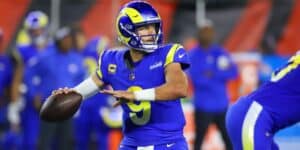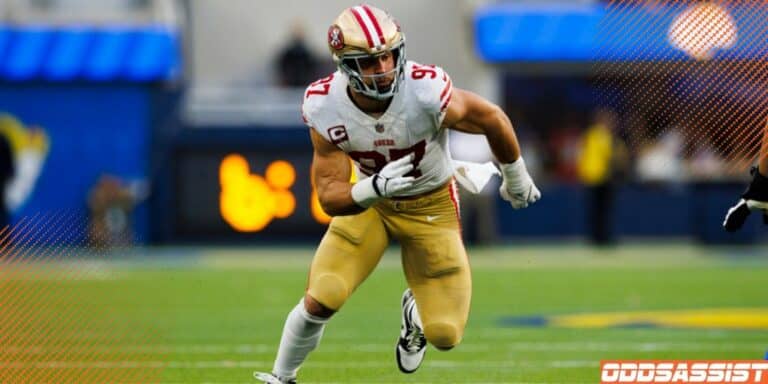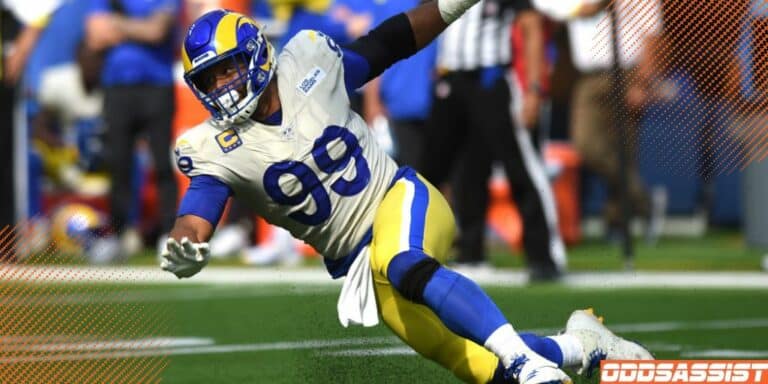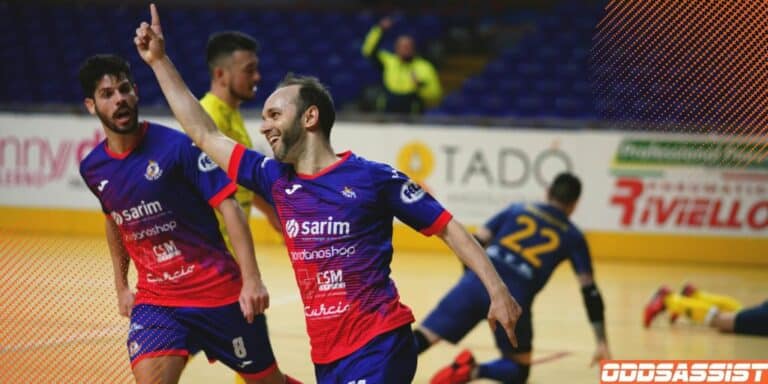Companies featured on this page may be our partners who compensate us if you sign up for one through our links. This doesn't affect our ratings or opinions in any way. Must be 21+. Gambling Problem? Call 1-800-GAMBLER. See full disclosure.
With more and more states legalizing sports betting, new bettors should familiarize themselves with popular sports betting terms and their impact on potential payouts.
One such term bettors should know is the vigorish, or vig for short, also commonly referred to as the “juice.” The vig is essentially what sportsbooks charge on wagers to help them make money.
For example, you’ll notice that, for NFL odds, most spread and total bets have -110 odds on each side. Even though these are seen as 50/50 bets, you have to bet $110 to win $100, as an example.
Because of the vig, you will lose money even if you win three -110 bets and lose three -110 bets. If there were no vig or juice, the odds would be +100 (bet $100 to win $100) on 50/50 bets or equal on moneyline bets (such as +200 on the underdog and -200 on the favorite).
Vig can significantly cut into bettor’s profits and is what makes it difficult to make money sports betting.
How can individuals maximize their profits and reduce the vig’s impact? Read on for more information on how to make the most profit possible off each bet.
What is the Standard Vig That Sportsbooks Charge?
The standard vig that most online sportsbooks charge is around 4% to 10%. Standard bets such as spreads, totals, and moneyline bets tend to have lower vig while prop bets and parlays tend to have higher vig.
While vig is present on every bet, individuals won’t find a separate listing for these. Instead, vig is the amount by which the odds are reduced on a given bet to ensure the sportsbook makes a profit.
For example, if the San Francisco 49ers (-6.5) play the Los Angeles Rams (+6.5), the 6.5-point spread for each team is listed at -110 odds. The implied odds are 50/50, meaning the sportsbook thinks there is a 50% chance of each bet hitting.
If an individual places a $100 bet on either team to cover the points. Bettors with 50/50 odds would expect the winning bet to pay out $100 in profit (in addition to the $100 originally wagered). Instead, the winning bet will earn around $90.91 in profit.
The additional $9.09 that was not paid on this bet is the sportsbooks’ vig. To earn $100 profit from -110 odds, bettors would have to place a $110 bet.
To further this example, suppose the sportsbook collected exactly $10,000 on both sides of the points spread in this particular game. The winning bettors would be paid out a profit of $9,090.91. The additional $909.09 retained from the payout is due to the vig/juice.
How to Calculate Vig
To calculate the vig on a market, you have to do the following:
1) Convert the odds each side of the bet to implied probability
You must first convert odds to implied probability.
Here is how to find implied probability from American Odds:
• Negative American Odds: Implied Probability = -Odds / (-Odds + 100)
• Positive American Odds: Implied Probability = 100 / (Odds + 100)
Using an example of a bet with -140 odds one side and +120 odds on the other, you would get:
• Favorite: 140/(140+100) = 58.33%
• Underdog: 100/(120+100) = 45.45%
2) Add the implied probabilities together
In the same example above, we would have 58.33% + 45.45% = 103.78%
3) Subtract 100 from the sum of the implied probabilities
Finally, doing 103.78% – 100% = 3.78% which is the vig the sportsbook is charging.
Another Equation to Calculate Vig
You can also use the following equation to calculate vig without having to convert to implied probability first (since it’s a part of the equation):
Vig = ((favorite odds / (favorite odds + 100) * 100) + (100 / (underdog odds + 100) * 100)) – 100
Using the same number as above, we would get:
Vig = ((140 / 240) * 100 + (100 / 220) * 100)) – 100 = 3.78%.
Can Vig’s Impact Be Lessened?
Once an individual understands how vig impacts profitability, bettors can find ways to reduce the sums sportsbooks retain on each bet.
Foremost, individuals can shop lines between multiple sportsbooks for the best odds—one of the easiest and best sports betting strategies.
Moneyline bets are a prime example of this opportunity as the majority of sportsbooks could offer -130 odds on the favored team while another sportsbook offers -125 odds. On a $100 wager, bettors would profit an additional $3.08 off the winning bet placed under -125 odds.
While $3.08 off a winning bet is a miniscule amount, that amount can add up quickly for individuals who regularly bet.
Second, a higher winning percentage creates an opportunity to reduce the impact from the vig. Individuals who win 50% of their bets or less will lose money betting throughout the course of their betting career. To earn more money than is lost, bettors need to win at least 55% of their bets. Individuals that can increase their winning percentage to 60% will significantly increase payouts of successful wagers and reduce the impact of the vigs.
Finally, grouping multiple bets together increases the payout odds. Parlays combine two or more bets that must each win individually in order to produce a payout for the bettor. By combining two or more points spread bets together, for example, two teams with -110 odds will pay out a combined +264 odds. That’s an increase of 45% more by not placing two separate bets on each game’s point spread.







